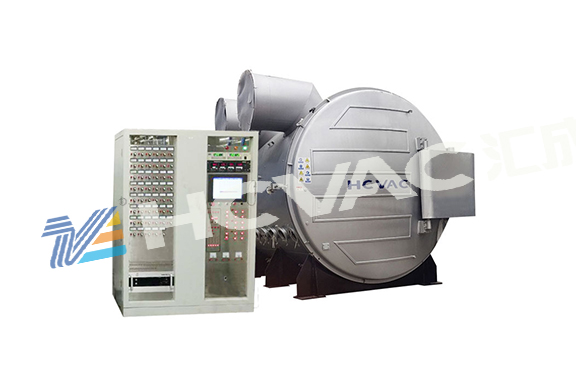It is always hoped that the distribution of the coating thickness of the
pvd coating machine on the workpiece is as uniform as possible when vacuum coating electromechanical deposition. When the total amount of metal deposited on the workpiece is the same, if the thickness distribution is not uniform, it will bring many disadvantages:
(1) For anodic coating, the thin coating of the
pvd coating machine can not withstand sacrifice corrosion, which will first rust the matrix. After a part of the workpiece is rusted, it is already unqualified, resulting in the waste of metal where the coating is too thick. In order to ensure that the thinnest place does not rust, the average thickness can only be increased, resulting in an increase in plating costs.
(2) For negative polarity coating, the porosity of the thin coating on the pvd coating machine is high (see lecture 10), which is easy to produce spot-like rust, and then the rust point increases to form a continuous sheet rust. Compared with the anodic coating, the negative polar coating corrodes faster at thin spots. For the local anti-nitriding and carburizing coating, the thin part is easy to form holes and lose the protective effect. If the thickness is uniform, the porosity of each part is not different, and the overall corrosion resistance is improved. For example, for the battery steel shell rolling plating bright nickel, the coating in the shell (especially near the bottom) is very thin, and even when cleaning and drying, it has a small rust point and yellowing, for this reason, it is necessary to "white" treatment, and quickly dry after sealing with water-soluble sealer.
(3) For bright electroplating, the thin coating of the pvd coating machine is poor in brightness and levelling due to the small cathode current density, which affects the overall appearance.
(4) When the alloy is electrodeposited, the alloy components at different thickens are not the same, or the appearance is uneven (such as imitation gold plating), or the corrosion resistance is inconsistent (such as zinc-nickel alloy).
(5) The physical and mechanical properties (such as brittleness, internal stress, etc.) of the coating at different thicknesses are not the same. If it is also processed by stamping and forming after plating, the machining performance of the coating is often poor (peeling, cracking, powder falling off, etc.).
In terms of corrosion resistance, appearance and machining performance, it is hoped to improve the uniformity of the coating thickness of the pvd coating machine. For dimensional hard chrome plating, if the user requires no grinding after plating, it is difficult to do; Sometimes in order to ensure that the thinnest reaches the final size requirements, when the thickness uniformity is poor, the average thickness has to be greatly increased, which is not uncommon in production. In order to make the thickness of each part of the coating on the workpiece as close as possible, it is necessary to understand the factors affecting the uniformity of thickness distribution



